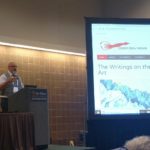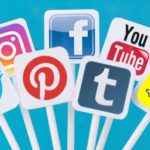 We seem to be constantly evaluating how well are doing communicating science, as well we should! Good scientists need to be introspective to some extent and consistently give themselves a reality check. That is, in essence, how science works as a process. We accept or refute a hypothesis based on evidence, fine tune it or discard it, and eventually move on. But it seems that we often have a problem practicing what preach. It’s no one’s fault really. Scientists are only human, just like the rest of the general population. We have faults and as a whole we would do better to recognize them. But scientists have particular large egos. Some might think that it is because we are so smart that we need to constantly remind others that we are of a higher caliber than the “general public”.
We seem to be constantly evaluating how well are doing communicating science, as well we should! Good scientists need to be introspective to some extent and consistently give themselves a reality check. That is, in essence, how science works as a process. We accept or refute a hypothesis based on evidence, fine tune it or discard it, and eventually move on. But it seems that we often have a problem practicing what preach. It’s no one’s fault really. Scientists are only human, just like the rest of the general population. We have faults and as a whole we would do better to recognize them. But scientists have particular large egos. Some might think that it is because we are so smart that we need to constantly remind others that we are of a higher caliber than the “general public”.
One of the common criticisms that travels around the science journalism/PR circles is that scientists can’t communicate with nonscientists. But I would like to suggest that communication isn’t the problem, but that scientists might not know how to judge the best communication strategy for their audiences. Journalists and writers are trained in this, and if they do it well can turn a single story into 4 pieces with different angles to different magazines written for separate audiences. Scientists might take a lesson in audience detection from the science writers in this respect. But, at the risk of turning this into communications royal rumble between journalists, scientists, PR people and science writers – no one horse in this race has the singular answer. This might be because we talk to people in different ways, but we don’t talk to different people in different ways.
Scientists tend to, not always though, communicate AT people. That is, tell them things in a non-engaging way. This is not always a bad thing. People of walks of life have a thirst for knowledge and want to hear the minute details of every grain of deep sea sediment we collect. But other audiences demand a good story. Science writers and journalists are often very good at communicating TO people. This entails putting the science in a context that is understandable to a “general public”? It might mean framing the results around a story with characters, structure, plots, and a moral or lesson. It could mean just describing recent research results in downgraded terminology. Here though, it is still a non-engagement with the audience (though it certainly doesn’t always have to be).
What has not been done very well by all the involved parties is communicating WITH people. In the last few years, with the advent of science blogging, the conversation has widened. Or at least we think so. Speaking from our experience at Deep Sea News, we have an extremely diverse readership of nonspecialists to tenured marine biology professors and everywhere in between. We are very appreciative of our audience and learn a great deal from the variety of backgrounds represented in our comments and the emails you send us. But without blogs and social media there is very little opportunity for people to connect with scientists. Building social connections undoubtedly makes people more receptive to new ideas, or at least lend a sympathetic ear.
This was the topic of a fantastic TED talk by Steven Johnson (embedded below) who asks, where do good ideas come from? He argues rather nicely, in my opinion, that good ideas derive from “coffee house” type environments. We use the combined intellect of our peers to bounce ideas off of and filter out good ideas for further exploration. Blogs are much like online coffee houses. Anyone can walk in, join a conversation and leave as they wish. Having people from all walks of life gives us scientists more diverse walls to bounce ideas off of, making us better communicators and helping us in our own research. The direct outcome of interacting with a variety of backgrounds is an improvement in how science as a process, and scientists as people, are appreciated in society. The indirect outcome is hopefully an improved climate for scientists to work in, e.g. more funding, jobs, etc.
Communicating with people involves a two way conversation. Its a give and take, a recognition that the party you are communicating with has a contribution to the discussion. Scientists may be mediocre communicators at best because it is in our nature to be the only one that understands what we do. We teach and lecture, communicating AT students or TO an institution’s press office. Some media training involves teaching scientists to drive home their main points during interviews with journalists. This has the unsatisfactory result of appearing elitist and ignoring the conversation that the interviewer is trying to set the tone of. If people are not part of the conversation, they are not invested in the discussion and may end up losing interest and fail to reach the conclusions you were trying to lead them to.
It disturbs me a little bit when I hear people say that what they do on blogs or elsewhere is communicating to the “common people”. Who are these common people? Does it include scientists or specialists in or outside your immediate research academic vicinity? Does it include teachers with or without an in-depth scientific training? Does it include maintenance people with a child-like fascination of their natural environment? Does it include school children and their parents? The truth is we never know who our audience is and we are lying to ourselves if we believe audiences are homogeneous. So I would like to propose that away from communicating AT or TO “common people” or the “general public” and move closer towards engaging people in a conversation about science.
I understand there are lots of criticisms to what I am talking about here. There is an institution of pure research that fights hard to maintain the scientist as a fixture of knowledge-elitism in society. This institution shuts away scientists from the “coffee houses”, virtual or otherwise, and encourages seclusion into a world of like-mindedness and long hours for high ranking publications and overhead money. This institution prevents creativity by trying to provide an false environment that fosters creativity
I won’t pretend to know how to be a better communicator and I don’t think we should dumb down content and resort to merely “shock and awing” our audience entirely. We do need to stop appearing elitist and give audiences a benefit of a doubt that they want to know something for the sake of knowing something. A blog post should be a starting point, not the final product. The ability to comment is a right that we as citizens on this planet should all utilize more often and exercise responsibly. We also need to take a pluralist approach, something I’ve recommended before and will continue to hammer. Pluralism, using multiple concepts or tools to tailor science outreach to different audiences, extends our reach and hopefully grasps into that most high of goals: to increase representation of minorities in science, in particular marine science as the case is here, because diversity is a good thing.
Scientists are not an authority that should be feared, but a resource to improve our civilization’s state of knowledge, to advance new ideas and technologies that improve our lives and more generally that of life on our planet. Thanks for entertaining my opinions.






Great post! Lots of “Yes!” points. One thing I’d like to comment on is the line “But without blogs and social media there is very little opportunity for people to connect with scientists.” While I think blogs and social networking are an amazing way for non-scientists to connect with scientists, I would argue that personal face-to-face interactions are also essential, and that we should be trying to find new and creative ways to make those off-line connections. The various science cafes and science pub nights that exist around the world are one example of a way for scientists to interact with “the general public”, whoever they may be. One of the things I’m really interested in is teaching scientists the skills to talk *with* instead of *at* people – most of us are only trained in the former in our formal academic lives. Not everyone is going to be awesome at connecting with “the gp”, even with training, but, everyone could probably at least improve! I hope.
Thanks for your comment Phoebe! I have not lived in area that does science cafes/pub nights. Maybe that means I start one here.
I totally agree that face time is very, if not the most, meaningful! I was thinking on a global or national scale. Plus I am so embroiled in the online world that I forgot we can actually step away from our computers from time to time ;). Maybe its because I drink when I blog, but I always viewed blogging and twitter, etc. as a virtual pub where anyone can walk in and join the discourse.
This may be a cop-out, though not intended to be, it is easier for scientists to communicate online. This might be especially important if they want to communicate but lack the confidence to do it face-to-face. One thing I should have addressed too, scientists already feel burdened by time by all the commitments their advisors, departments, institutions, etc. ask them to do. I hear the criticism often that we shouldn’t be asking to scientists to add communication with “the gp”. My response is typically is along the line of communicating to other people gets them on your side, both ideologically and fiscally. I feel strongly that scientists need to be more comfortable with a little politics, which is all about communication. The fate of science funding and public acceptance and appreciation depends on it.
Really great editorial, KZ!
nice post. I am very much in agreement that scientists could and should do more to communicate and engage with the broader public about science. One hurdle, though, is that academic institutions often do not ‘incentivise’ outreach (even though proposals often require ‘broader impacts’!), making it a dis-incentive to scientists that are thinking about tenure. Furthermore, I do not think many institutions provide or support training for scientists to help them learn how to communicate, leaving it upon the scientist to take this up on their own if they feel passionate about it. I would like to see academic institutions start making this more of a priority.
Ha- right after I posted that, here comes an email in my inbox about an NSF-sponsored workshop on communication training:
http://www.nsf.gov/events/event_summ.jsp?cntn_id=118599&WT.mc_id=USNSF_13
Exactly. This is something we’ve discussed a lot amongst ourselves at DSN and with other other scientist communicator colleagues. There was a great session at the recent Science Online conference in Raleigh basically about how to sell your outreach and blogging as part of your tenure package from several colleagues who went through this process. It was very enlightening to me, I should do my next editorial on it perhaps.
Basically it comes down to tailoring your outreach, whatever it may be, to your university/institution’s mission statement. Many public universities especially have statements about reaching out to the local/regional community and promoting the image of the university as a “beacon” (or some such terminology), etc. etc. John Hawks described how he broke down his site metrics to show how his blogging affected the local community and made an argument that he was acting within the university’s mission statement (more or less).
But he and another professor both cautioned that blogging and outreach are only successful as part of a tenure package if your CV is already in good shape. So its more of an icing on the cake, which goes back to what you said about academic institutions needing to change their attitudes with outreach and actually enforcing that part of its mission.
It’s awesome that the NSF is stepping up and offering these kinds of events. One thing that I notice about this and other similar “communication” workshops is that they almost all focus entirely on communicating to the media. While that’s a very important aspect of what we do, communicating to the ‘general public’ is also really important and should be emphasized as well. Perhaps next time NSF runs such a workshop they should include an elementary school teacher as one of the facilitators. If you can explain your work to a 4th grader and get them excited about what you do, you’re on the right track.
People following this post and comment thread might appreciate Emily’s recent post Elements of an Effective Public Education Toolkit http://www.thisview.org/?p=8
Many excellent points in there as well :)
Hi Kevin — I found this blog post through one of your tweets. Been doing lots of research on science + communication myself. Thanks for thoughtful words. It’s good to shift the argument away from huge groups such as “Scientists,” “Common People,” “Bloggers,” “Journalists,” and propose finer-grained perspectives so we can actually get to work improving communication throughout all levels.